My departure was delayed one day more, because of the weather. Heavy rain and powerful headwind made cycling insane, if possible at all. And I still had my parents' cosy yacht to stay in warm.
We had been killing the time with talks and Internet, while some woman knocked at the deck and welcomed us in Polish. Jola, that's her name, is a permanent resident of Skarsvåg, in contrary to other Poles who come here for seasonal works or fishing. We learned that she had also spent many years in Denmark, which is the origin country of parents' boat. Beside long talks, there was great fish soup. Jola, it's the best thing I have eaten in Norway!
Next day the sky had cleared up and after hugs and farewells, with panniers and belly full of good food, I rode away in the direction of not-setting sun. We will meet in about two months from now, while I will be cycling across Poland, so there was not much of a ceremony, except for the mandatory photo.
Just before entering the giant tunnel connecting Magerøya to the mainland, I spotted Midnatsol, one of the famous Hurtigruten ships. The Hurtigruten ferry service had been the only route permanently connecting north and south of Norway, long before roads were built through countless mountains there. Their regular service hours have been a sign of civilization and source of national pride for many generations of Norwegians. Still, they occupy the prominent name of National Route #1. Now they are more of a tourist attraction, and newer ferries closely resemble cruise ships, but some older ones still have good classical look. Too bad, Midnatsol was a new one.
You may see and read more about Hurtigruten on my parents' website (in Polish only).
The tunnel was a real monster. First, a 3km descent into 220m deep under the sea level, followed by the same cycle up. Making my way out of the abyss resulted in meeting the outside world in a wet T-shirt only. I prefer mountains much more, not only because of better views, but also for the correct order of work and pleasure.
On the road towards Lakselv I spotted a roadside parking with a small wooden hut. An old sign explained clearly that it was once a souvenir kiosk, but the business failed apparently. Relieved from picking up a tent I just rode inside and closed the door with an old board. Either the board was to small, or the space too big, or just the wind and rain did their job, the night was very cold.
Perhaps I had became used to Norwegian landscapes, because food breaks were the main highlights of the next day. I crossed my way I had done going from Alta, and tanked cola on the same gas station. Shops here are scarce, so plan well ahead when coming to these areas.
At the end of Porsangerfjord, which has been on my left during the last two days, the land becomes more populated an often fenced. Reindeers wandering freely are there no more, but their place has been taken by a variety of birds. Starbursdalen National Park is mostly about them, and also about fish. Beautiful river I crossed was inviting to look for a big salmon, but the sign on the bank reminded me about licenses. Nearby headquarters of the NP had all the information on display. The 600NOK fee per day and certificate of disinfection of the fishing tackle made me stop thinking about giving a try. Many things in Norway come for free — water, sea fishing, camping... But when something has a price, it's expensive as hell.
The disinfection requirement, being a result of the presence of some salmon parasite in other rivers of Norway, made me think on how they manage to disinfect all the birds which move freely from one river to another. Too bad it was night and I couldn't as at the HQ.
The last campsite at the sea was beautiful and – again – I left late. This resulted in cycling against strong southern wind. I crossed sleepy-Sunday and uninteresting Lakselv, failing to find a free wireless hotspot. The Lakselva river and first pine trees provided interesting views, so much different to the Barents Sea, to which I said goodbye that morning.
Norwegian military warned me in advance of upcoming no-stopping restricted area, so I left the road for a lunch. It was interrupted by two cyclists going the opposite way — the first ones I met on the route. A Dutchman and a German had been going to Nordkapp, so we quickly swapped important information. To my relief, I learned that temperatures are no more a concern in Finland, but the mosquitoes are starting to be.
Another surprising interruption in fighting the headwind, were remains of a wartime hospital. Germans had built it and, when retreating before advancing Soviet troops, tried to burn it to the ground much like they did with everything else on Norwegian soil. The remains still contain rusted beds, stoves, pipes and zinc buckets. It would be impossible in Poland, and numerous other countries, to keep such a site unprotected without falling victim to scrap collectors. Another sign of how highly civilized this nation is. Only the amount of roadside garbage keeps to the European average.
As soon as the headwind became lighter, it started raining. Also the pine forest disappeared, again giving way to tundra with small and twisted birches. This continued until Karasjok, which doesn't have much to offer, especially at night. A small park with reconstructions of Sami huts and tents, and a nice church, one of the few buildings which somehow survived Nazi tactics of scorched earth.
I camped in elevated pine forest, just few kilometers before the border, ready for the next farewell — this time to Norway.

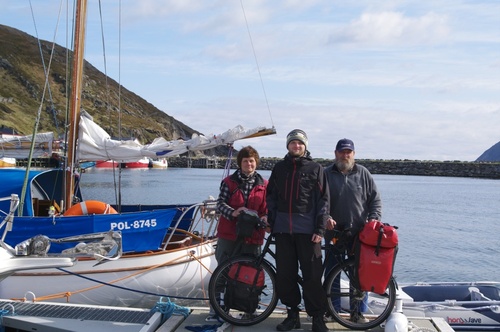
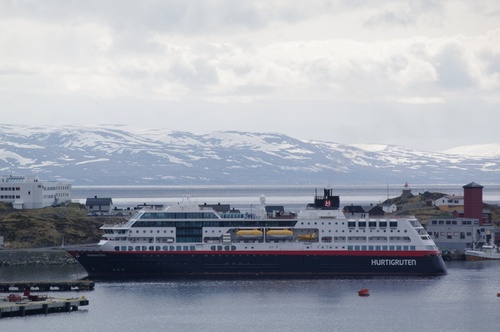
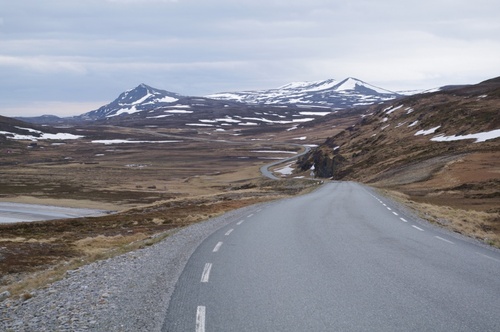
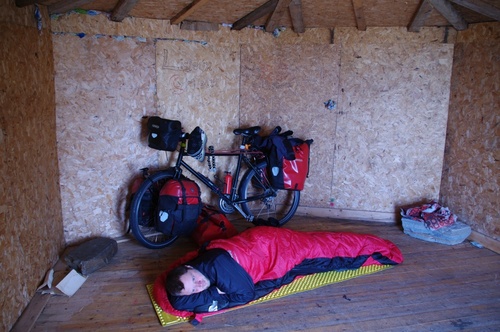
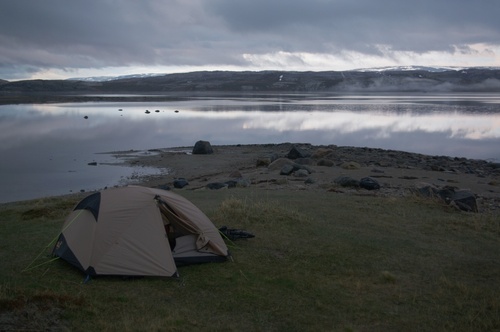

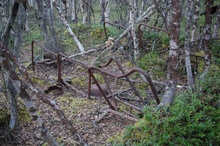
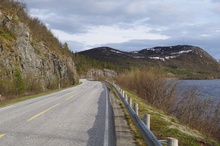
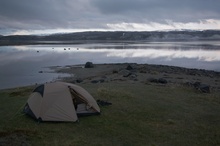
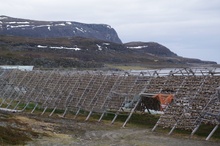
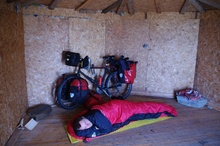
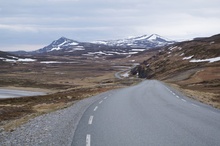
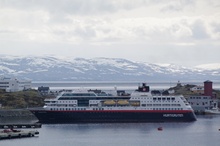
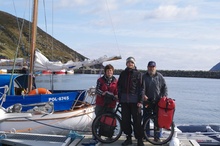
Comments:
ambi
Powodzenia.
mama
Pigiel
Powodzenia w dalszej drodze :)
PS. pozdrowienia dla mamy i taty Sałaban ;)
michał
Pojadę w bardziej zamieszkałe okolice, będą i ludzie :)
siostra:)
przyjechały do mnie dzisiaj sakwy - przygotowania do dołączenia do Ciebie oficjalnie rozpoczęte! buziaki
MaRo
Pozdrowienia od byłego współpracownika z "Benka".
Marta Rymarkiewicz
Pozdrawiamy z Waldkiem
Sergey
Odbitki